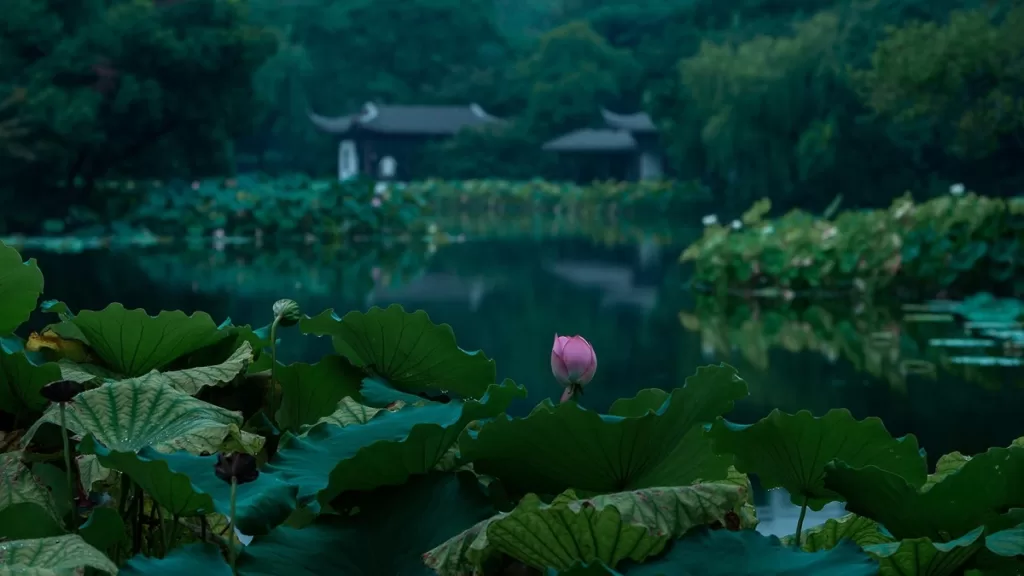Hangzhou Botanical Garden (杭州植物园) is situated to the northwest of West Lake in Hangzhou, Zhejiang Province. It encompasses nine exhibition areas, including economic plants, ornamental plants, trees, and landscape gardens, along with four experimental zones. The garden offers scenic views throughout the seasons, featuring highlights such as the Maple Rhododendron Garden and Peach Blossom Garden for spring visits (February-March), the Osmanthus and Lagerstroemia Garden for autumn, and the captivating Lingfeng Plum Blossom Festival held in early spring.
With two entrances, visitors can access the garden through either the North Gate (Yuquan Gate) by proceeding straight after reaching the prominent “Hangzhou Botanical Garden” archway, or the South Gate by turning left.
Table of Contents
- Basic Information
- Location and Transportation
- Highlights of Hangzhou Botanical Garden
- Vlog about Hangzhou Botanical Garden
- Attractions near Hangzhou Botanical Garden
Basic Information
| Estimated Length of Tour | 2 – 3 hours |
| Ticket Price | 10 RMB |
| Opening Hours | 7.00 – 17.00 (1st November – 30th April) 7.00 – 17.30 (1st May – 31st October) |
| Telephone Number | 0086-0571-87992110 0086-0571-87999634 0086-0571 87961908 |
Location and Transportation
Hangzhou Botanical Garden is situated in Taoyuan Ridge, Xihu District, Hangzhou, Zhejiang Province, China. Covering an expansive area of 284.64 hectares, the garden is located within the serene surroundings of the West Lake region.
To get there, tourists can take bus 15, 28, 82, or 278 and get off at Yuquan – Qingzhiwu Stop (玉泉-青芝坞站).
Highlights of Hangzhou Botanical Garden
Lingfeng Plum Blossom

Lingfeng Plum Blossom holds historical significance as one of the three major plum blossom viewing sites around West Lake. Dating back to the Wuyue Kingdom in the Five Dynasties, the Jiufeng Zen Temple was initially established, adorned with plum blossoms. Through various dynasties, it went through transformations and was eventually renamed “Lingfeng Temple” during the Northern Song Dynasty. Despite fluctuations in its history, the area gained prominence as a plum blossom destination. In 1986, in response to the growing tourism demand, the Municipal Garden Bureau invested 2 million yuan for the reconstruction of the area. After two years of development, it officially opened to the public in 1988, coinciding with the peak bloom of plum blossoms. The revitalized Lingfeng area covers 150 acres, featuring over 5,000 newly planted plum trees, including fruit-bearing and flowering varieties. The meticulously arranged orchards showcase a diverse collection with two series, four major categories, twelve types, and forty-five different plum blossom varieties. Some ancient plum trees, aged over a hundred years, add to the charm of this picturesque location.
Yuquan Yuyue (Fish Leaping in Jade Spring)

Located on the north side of the botanical garden, Yuquan covers 21 acres and is one of Hangzhou’s renowned “Three Springs.” Originally a temple built during the Southern Song Dynasty, known as Yuquan Temple, it was later renamed Qinglian Temple during the Qing Dynasty. Unfortunately, the temple was destroyed during the Xianfeng era. Yuquan’s spring, discovered during the Southern Song Dynasty, has a history of over 1,400 years. The crystal-clear spring water, resembling jade, led to its name. Today, Yuquan is known for its serene atmosphere and is populated with plump green and colorful carp. Visitors can enjoy watching the fish and find a tranquil spot to relax. The plaque “Fish Joy Nation (鱼乐国)” was inscribed by the Ming Dynasty calligrapher Dong Qichang, adding artistic flair to this historical spring.
Bai Cao Yuan (Medicinal Herb Garden)

Located on the east side of the botanical garden, covering an area of 1.5 hectares, Bai Cao Yuan was established and opened to the public in 1969. This garden is a living specimen area for the popularization and practical teaching of medicinal plants, featuring over 1,000 varieties (including variants and types), including the famous “Zhe Ba Wei” Chinese herbal medicine. The garden ingeniously creates ecological zones such as shade-loving, sun-loving, semi-shade, rock-dwelling, and aquatic areas, based on the different ecological requirements of plants. Using landscaping techniques and simulating natural methods, it has also constructed the “Ben Cao Xuan” potted medicinal plant display area.
Qi Shu Dujuan Yuan (Maple and Azalea Garden)

Situated within the north gate of the botanical garden, adjoining the Shan Shui Yuan, Qi Shu Dujuan Yuan spans 2 hectares and was opened in 1958. This garden utilizes existing large deciduous trees like maples and beeches, showcasing a combination of “Spring Azalea Blossoms and Autumn Maple Leaves.” The garden features maple and azalea as middle and lower layer trees, complemented by rock formations, lawns, and pavilions. It includes 21 species of maple trees, such as the graceful Acer gracilifolium and Acer palmatum, along with 18 varieties of azaleas, including the enchanting Mao Bai and Zi E. The garden offers a harmonious blend of vibrant colors and natural beauty, making it a delightful destination for visitors.







